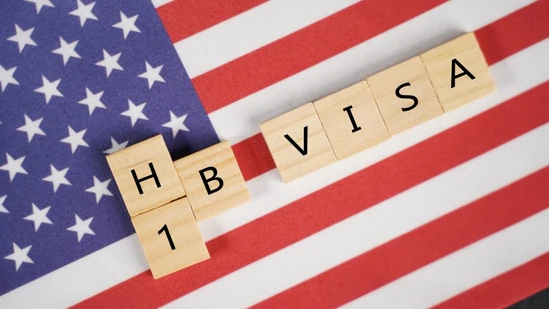
USCIS
In a significant development for thousands of skilled workers worldwide, the United States Citizenship and Immigration Services (USCIS) has officially announced that it has reached the H-1B visa cap for the Fiscal Year (FY) 2026. This marks the completion of the initial selection process, effectively concluding the lottery round that determines which applicants may move forward with their visa petitions.
The H-1B visa program, which allows U.S. employers to temporarily hire foreign workers in specialty occupations, is one of the most sought-after pathways for highly skilled professionals — particularly from countries like India and China. Every year, the demand far exceeds the cap, triggering a computerized lottery process.
What USCIS Announced
In its official press release, USCIS stated:
“We have received sufficient electronic registrations during the initial registration period to meet the H-1B regular cap and the advanced degree exemption (also known as the master’s cap) for FY 2026.”
The regular H-1B cap stands at 65,000, with an additional 20,000 spots available under the master’s cap for applicants who hold advanced degrees from U.S. institutions.
This announcement means that no further applications will be accepted for the FY 2026 cap season. Registrants who have been selected in the lottery will now be eligible to file full H-1B petitions with USCIS starting from April 1, 2025.
What Happens Next?
For those who were selected in the lottery, this is just the beginning of the H-1B journey. Selected applicants must now submit their H-1B petitions with supporting documentation within the filing window specified by USCIS. This includes labor condition applications (LCA), employer letters, educational qualifications, and other relevant proofs.
For the unlucky majority who were not selected, the options are limited. Unless they qualify under other visa categories (such as L-1, O-1, or student OPT extensions), they will need to wait until the next fiscal year to reapply — a frustrating and uncertain process for many.
A System Under Pressure
The H-1B program, despite being critical for the U.S. tech industry and other high-skill sectors, has long been criticized for being overburdened and outdated. In recent years, the number of registrations has exploded, with over 750,000 registrations received for FY 2025, reflecting growing demand and increasing participation from Indian tech workers, IT consulting firms, and multinational companies.
The situation for FY 2026 is expected to be similarly intense, though final registration numbers have not been disclosed. Some applicants and immigration attorneys have expressed concern over duplicate or fraudulent entries in the lottery system — a loophole USCIS has vowed to address with stricter scrutiny and advanced verification tools.
Indian Professionals: The Most Affected
Indian nationals account for a massive portion of H-1B applicants each year. According to U.S. government data, more than 70% of H-1B holders in recent years have been from India, with many working in STEM fields such as information technology, engineering, and data science.
The cap being reached yet again highlights the overwhelming interest in working in the United States — driven by better salaries, international exposure, and permanent residency opportunities. But it also reflects the limitations of a system that is unable to accommodate the demand of a globalized talent pool.
Calls for Reform Grow Louder
Immigration experts and industry leaders have renewed calls for reforming the H-1B process. Many argue that the lottery-based model is arbitrary and does not prioritize skill level, employer need, or economic impact. Instead, they advocate for a merit-based system or an expansion of the visa cap to better match the demands of the U.S. economy.
In a recent statement, the American Immigration Lawyers Association (AILA) said:
“The U.S. economy suffers when talented individuals are turned away year after year. We need a system that aligns immigration policy with labor market realities.”
Advice for Applicants
Those who were not selected in the FY 2026 lottery are advised to:
- Explore other visa options such as L-1 (intra-company transfer), O-1 (extraordinary ability), or F-1 (student visas with OPT).
- Consider higher education opportunities in the U.S. to qualify for the master’s cap.
- Discuss long-term immigration strategies with legal experts, especially if working for a multinational company.
Conclusion
The announcement that the H-1B cap has been reached for FY 2026 is a crucial milestone in a process that affects the dreams and careers of thousands of professionals worldwide. While it offers clarity for some, it leaves many others in limbo.
Until meaningful reform is implemented, the annual H-1B lottery will continue to be a high-stakes gamble — one that defines the future of talent mobility, innovation, and opportunity in the U.S.
Thanks For Reading